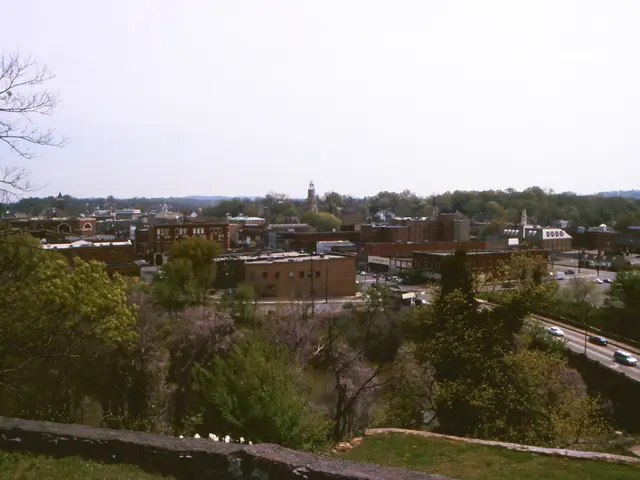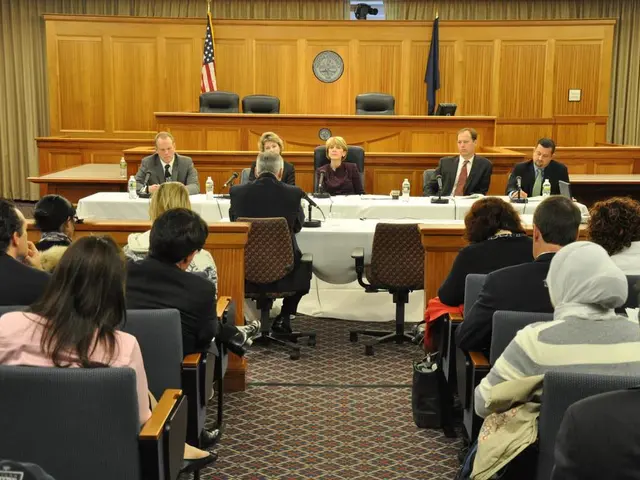Strategizing a Leisurely Journey Across Europe
Discover the charm of Europe at a leisurely pace, taking in the continent's rich history, picturesque landscapes, and vibrant culture without the pressure of a rushed itinerary. Here's how to plan a slow-paced European trip that focuses on fewer destinations, off-season travel, loose itineraries, and accommodations that support a slower pace.
**Choose Fewer Destinations, Stay Longer**
Minimise travel stress and costs by choosing fewer destinations and staying longer in each place. This approach allows for deeper exploration and relaxation, rather than rushed sightseeing. Spending a full week in one city or town, for example, provides the opportunity to rent accommodations that feel like home, such as villas in the south of France.
**Travel During the Off-Season**
Avoid big crowds, high prices, and extreme weather by travelling during the off-season, such as spring or autumn months like May, September, October, or even November. In Italy, for instance, avoiding summer heatwaves and peak tourist times enhances comfort and enjoyment.
**Keep the Itinerary Loose**
Rather than over-planning every day, keep your itinerary flexible to allow for spontaneous and unplanned experiences. This approach leaves room for discovering art exhibits, street performances, or good pastries that you might otherwise miss.
**Choose Accommodations that Support a Slower Pace**
Select accommodations that match the desired pace of travel. Opt for small guesthouses, local neighbourhood apartments, or countryside retreats that offer a more authentic and relaxed experience.
**Use Regional or Short Scenic Train Routes**
Slow travel by train in Europe lets you savor the landscapes and cities at leisure. Use regional or short scenic train routes to enjoy relaxing travel days between destinations without long, exhausting journeys.
By embracing these principles—fewer stops, shoulder season travel, flexible plans, and comfortable lodgings—you'll fully embrace the spirit of slow travel, experiencing Europe more meaningfully and less hurriedly.
---
### Summary Table for Slow-Paced European Travel:
| Aspect | Tips | |-------------------------------|----------------------------------------------------------| | Fewer Destinations | Stay longer in each place | | Off-Season Travel | Travel in spring/autumn months, avoid summer crowds | | Itinerary | Keep it loose and flexible | | Accommodations | Choose supportive, local-style stays (guesthouses, agriturismos) | | Transport | Use short scenic train routes to avoid rush and fatigue |
This approach enhances relaxation, budget management, and genuine cultural immersion on your European trip. Heading to neighbourhood markets instead of big grocery stores, taking time in cafes, and visiting parks in the evening can provide a more grounding travel experience.
Moreover, some travel destinations are designed with well-being in mind, featuring spacious rooms, outdoor seating, and wellness services like yoga or massage. Luxury Portugal tours offer authentic local experiences, such as wine tasting in the Douro Valley, coastal walks, and cooking regional dishes, without rushing from one sight to the next.
Finally, consider signing up for a newsletter to provide regular inspiration for living a slow, simple, soulful, and sustainable lifestyle. Staying longer makes the trip easier by reducing logistical concerns and potentially saving money through weekly rental discounts and home-cooked meals. Enjoy your slow-paced European adventure!
1.To truly appreciate the enchanting European landscapes and culture, adopt a lifestyle of slow living during your travel by focusing on fewer destinations, spending more time at each place, and staying longer.2. An effective method to embrace slow travel is by choosing accommodations that align with your slow pace, such as cozy guesthouses or countryside retreats, which offer authentic experiences and relaxation.3. Incorporate budget-friendly travel strategies into your slow European adventure by traveling during the off-season (for example, May, September, October, or November), thus avoiding peak tourist times and excessive prices.




